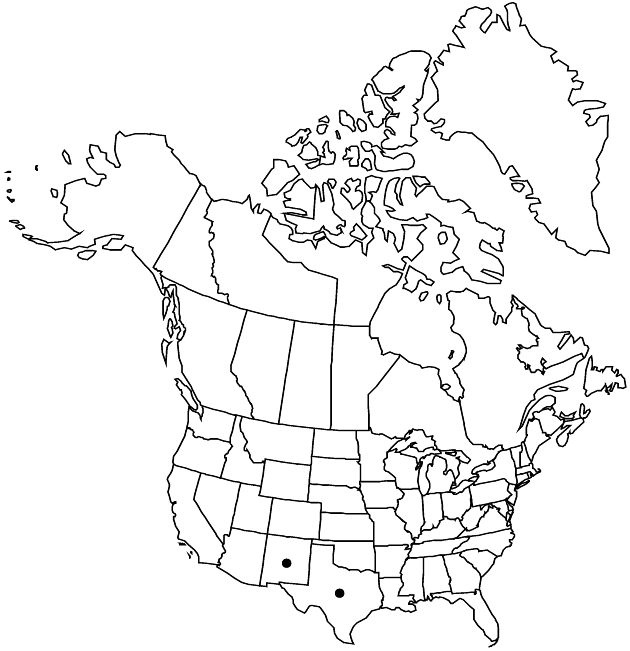Difference between revisions of "Hymenoxys vaseyi"
Bull. Torrey Bot. Club 31: 493. 1904.
FNA>Volume Importer |
imported>Volume Importer |
||
| (5 intermediate revisions by 2 users not shown) | |||
| Line 8: | Line 8: | ||
}} | }} | ||
|common_names=Vasey’s rubberweed or bitterweed | |common_names=Vasey’s rubberweed or bitterweed | ||
| − | |basionyms={{Treatment/ID/ | + | |special_status={{Treatment/ID/Special_status |
| + | |code=E | ||
| + | |label=Endemic | ||
| + | }}{{Treatment/ID/Special_status | ||
| + | |code=C | ||
| + | |label=Conservation concern | ||
| + | }} | ||
| + | |basionyms={{Treatment/ID/Basionym | ||
|name=Actinella vaseyi | |name=Actinella vaseyi | ||
|authority=A. Gray | |authority=A. Gray | ||
| + | |rank=species | ||
| + | |publication_title=Proc. Amer. Acad. Arts | ||
| + | |publication_place=17: 219. 1882 | ||
}} | }} | ||
|synonyms= | |synonyms= | ||
| Line 36: | Line 46: | ||
-->{{#Taxon: | -->{{#Taxon: | ||
name=Hymenoxys vaseyi | name=Hymenoxys vaseyi | ||
| − | |||
|authority=(A. Gray) Cockerell | |authority=(A. Gray) Cockerell | ||
|rank=species | |rank=species | ||
| Line 50: | Line 59: | ||
|publication title=Bull. Torrey Bot. Club | |publication title=Bull. Torrey Bot. Club | ||
|publication year=1904 | |publication year=1904 | ||
| − | |special status= | + | |special status=Endemic;Conservation concern |
| − | |source xml=https:// | + | |source xml=https://bitbucket.org/aafc-mbb/fna-data-curation/src/2e0870ddd59836b60bcf96646a41e87ea5a5943a/coarse_grained_fna_xml/V19-20-21/V21_1107.xml |
|tribe=Asteraceae tribe Heliantheae | |tribe=Asteraceae tribe Heliantheae | ||
|subtribe=Asteraceae (tribe Heliantheae) subtribe Gaillardiinae | |subtribe=Asteraceae (tribe Heliantheae) subtribe Gaillardiinae | ||
Latest revision as of 21:08, 5 November 2020
Perennials, 20–60 cm (polycarpic; often with moderately branched, woody caudices). Stems 1–10, green throughout or sometimes purple-red-tinted proximally, sparingly or moderately branched distally, ± hairy. Leaves: blades usually lobed (lobes 3–23), glabrous or sparsely hairy, gland-dotted (basal leaf bases sparsely, if at all, long-villous-woolly); mid leaves lobed (lobes 5–21, terminal lobes 0.8–1.2 mm wide). Heads 10–50+ per plant, in paniculiform to corymbiform arrays. Peduncles 1.5–5.5 cm, ± hairy. Involucres campanulate, 8–9 × 8–11 mm. Phyllaries in 2 series, unequal; outer 8–11, basally connate 1/2–2/3 their lengths, obovate, 4.5–6 mm, apices acute; inner 8–12, obovate, 4.5–6 mm, apices mucronate. Ray florets 8–11; corollas yellow, 9–15 × 4–7 mm. Disc florets 25–80+; corollas 3.5–4.2 mm. Cypselae narrowly obpyramidal, 2–2.7 mm; pappi of 5–6 obovate, aristate scales 1.7–2.7 mm. 2n = 30.
Phenology: Flowering (Jun–)Jul–Sep.
Habitat: Open areas, edges of forests
Elevation: 1600–2100(–2500) m
Discussion
Of conservation concern.
Selected References
None.
